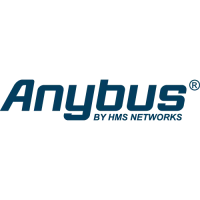Anybus CompactCom 40 EtherNet/IP
Doc.Rev. 1.5
Chapter 4
4. Web Server
4.1 General Information
Category: extended
The built-in web server provides a flexible environment for end-user interaction and configuration pur-
poses. The powerful combination of SSI, JSON, and client-side scripting allows access to objects and
file system data, enabling the creation of advanced graphical user interfaces.
The web interfaces is stored in the file system, which can be accessed through the FTP server. If neces-
sary, the web server can be completely disabled in the Ethernet Host Object.
See also...
• “FTP Server” on page 22
• “Server Side Include (SSI)” on page 33
• “JSON” on page 51
• “Ethernet Host Object (F9h)” on page 171
4.2 Default Web Pages
The default web pages provide access to:
• Network configuration parameters
• Network status information
• Access to the host application ADIs
The default web pages are built of files stored in a virtual file system accessible through the vfs folder.
These files are read only and cannot be deleted or overwritten. The web server will first look for a file
in the web root folder. If not found it will look for the file in the vfs folder, making it appear as the files
are located in the web root folder. By loading files in the web root folder with exactly the same names
as the default files in the vfs folder, it is possible to customize the web pages, replacing such as pictures,
logos and style sheets.
If a complete customized web system is designed and no files in the vfs folder are to be used, it is rec-
ommended to turn off the virtual file system completely, see the File System Interface Object.
See also...
• “File System” on page 20
• “Anybus File System Interface Object (0Ah)” on page 131

